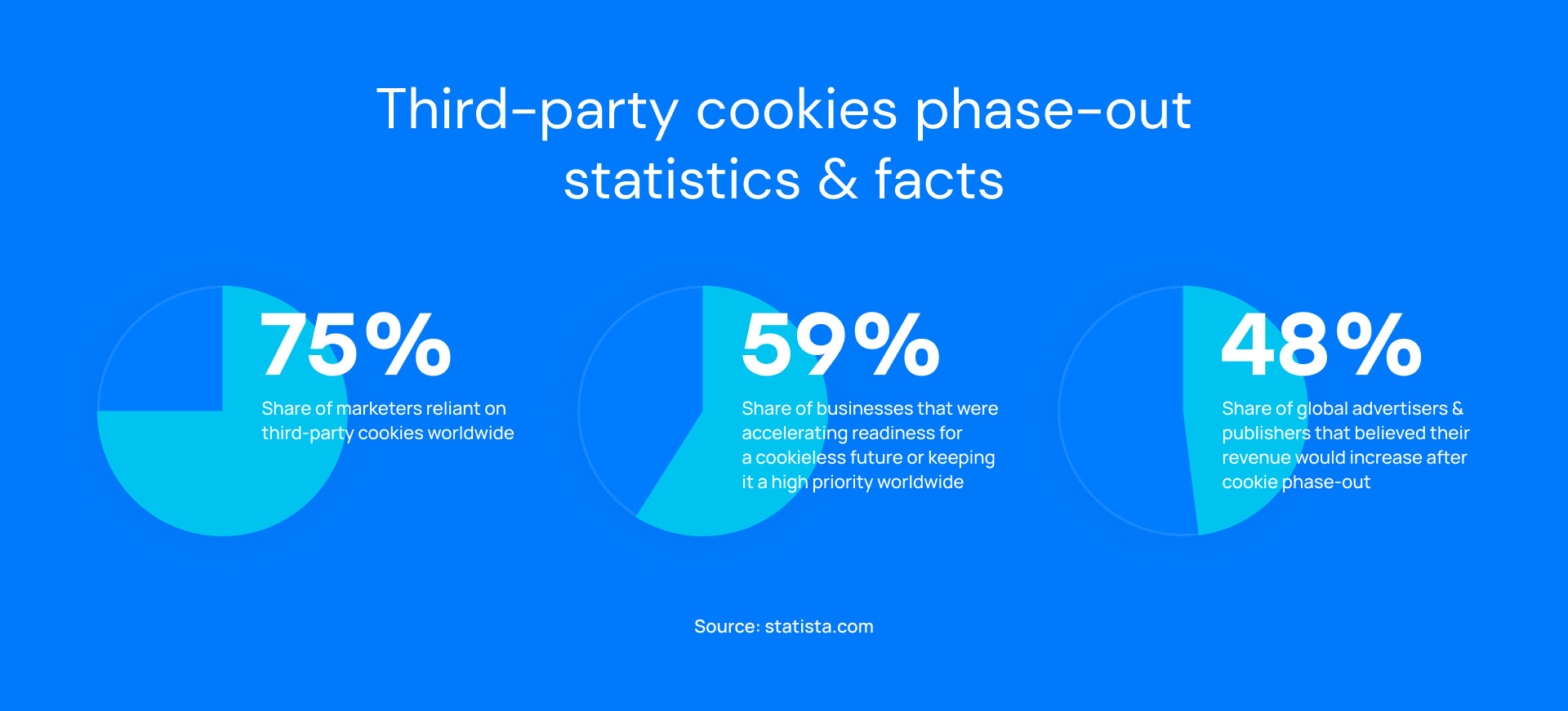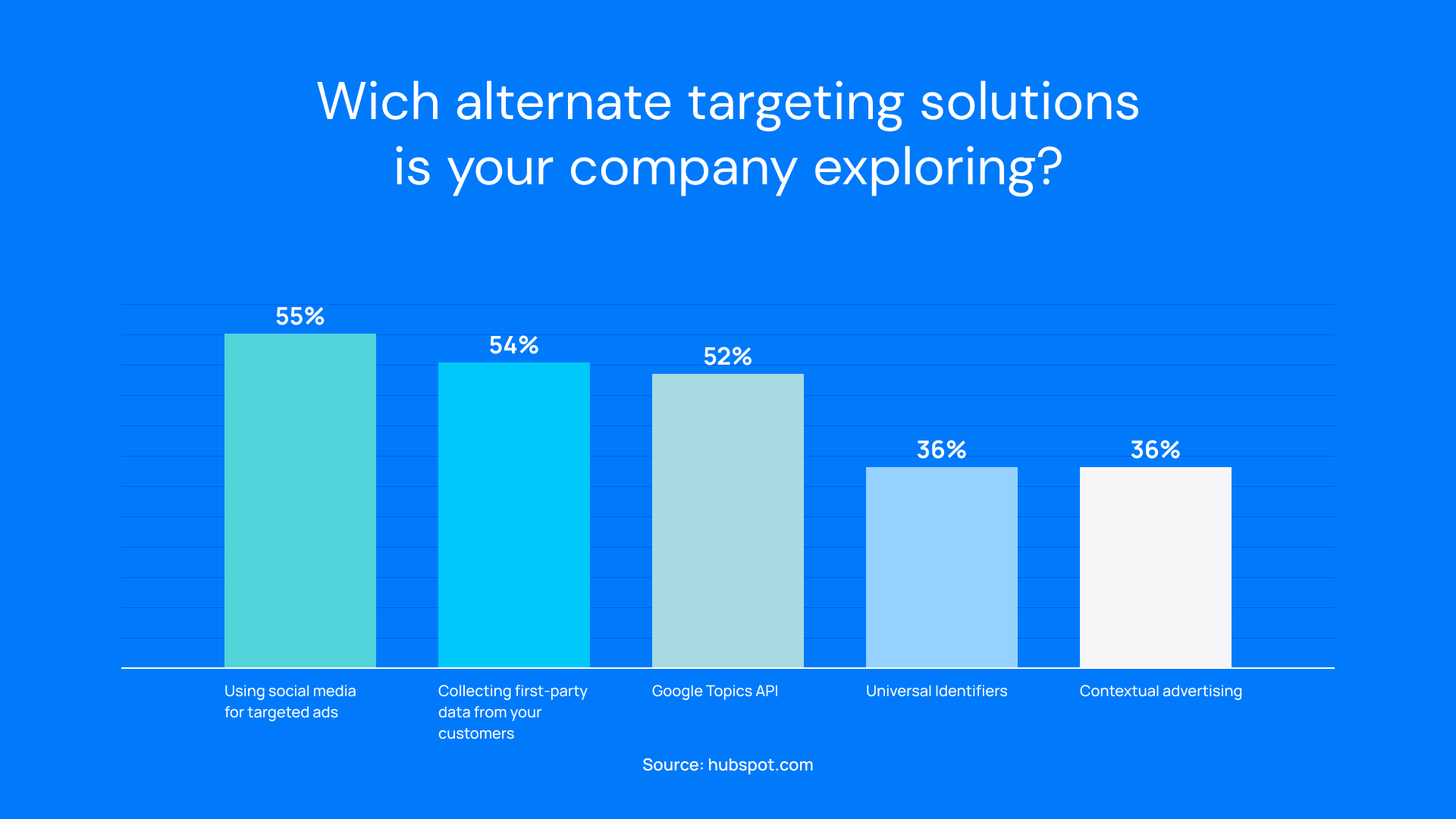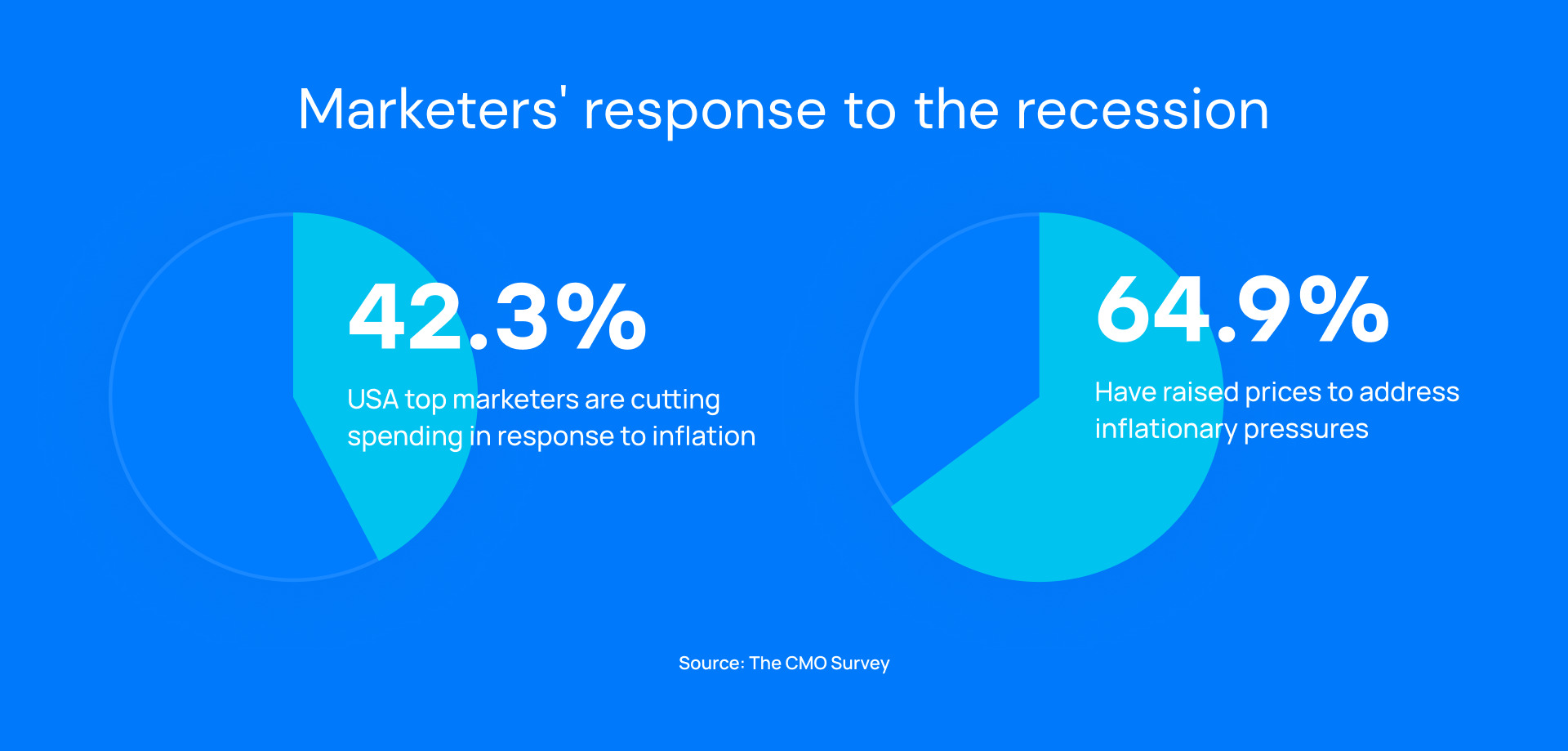Back in 2020, when the pandemic started, brands had to swiftly adapt their marketing tactics and content plans to accommodate remote work, supply chain disruptions, and service delays. Even three years later, as the world has learned to manage the global issue, ad market players continue to require flexibility due to the emergence of new global challenges and the continued economic downturn. With evolving consumer preferences, technological advancements, and shifting market dynamics, advertisers face an ever-growing set of challenges and must adapt their strategies to stay relevant. As we live into 2023, advertisers face unique hurdles and opportunities that require their attention and expertise.
In our recent article, we analyzed what publishers are facing in 2023, and today, it’s time to see what challenges the buyer side will encounter. From the rise of streaming platforms to the continued refusal of third-party data and shifting to cookie-less advertising, understanding these challenges will help advertisers devise effective strategies and achieve their marketing goals.
Table of Contents
The Rise of Streaming Platforms
The growth of CTV as a digital advertising channel has been remarkable in Q1 – Q2 2023. As streaming services gain traction, more and more individuals use their internet-connected devices to access their favorite TV shows and movies. This massively accelerated shift has created exciting opportunities for advertisers to target and engage their desired audiences effectively. But besides options, marketers face the severe challenge of coping with growth that exceeds all expectations.

To better understand how much investment in СTV advertising is growing, it is worth looking at a few lines of public statistics:
- In the past, 2022, CTV ad spending reached a significant milestone, totaling $21.16 billion.
- The total ad spending accounted for 6.1% of all media ad spending last year.
- According to predictions, advertisers anticipate that CTV ad spending will comprise 16.5% of the total US display ad spending in 2023.
- In 2020, Hulu secured its position as the top individual CTV advertising platform in the United States, generating $3.1 billion in ad revenue.
- From 2022 to 2023, 86% of retail marketers expressed their intention to augment their CTV budgets.
- By the conclusion of 2026, CTV usage is projected to reach a staggering 70% of the US population.
Trends in 2022 gave every reason to believe that CTV would get a massive boost in 2023, but its growth exceeded all expectations. And there are several reasons for this.
The success of Connected TV can be attributed to its broad audience reach, accommodating shifting viewing habits, targeted advertising capabilities, data-driven insights, flexible monetization models, enhanced user experience, and convenience across multiple devices.
CTV combines the best of linear television and digital interactivity, providing a platform that appeals to a wide range of viewers while offering advertisers effective and personalized advertising opportunities. However, we will delve into this topic in more detail at a later point.
Continued Third-party Data Waiver
Due to third-party data opt-outs, 2023 will likely be the last year the advertising market will be the same as we’re used to seeing it. Data protection and third-party data opt-out go hand in hand.
At this point, data regulation at the legislative level comes into play. The California Privacy Rights Act (CPRA) is an extension of the California Consumer Privacy Act (CCPA), a data privacy law. It was passed in November 2020 and was fully enforceable from January 1, 2023. The CPRA brings about significant changes and additions to data protection.
The CPRA widens the definition of personal information, encompassing additional categories like geolocation data, sensitive information, and specific types of profiling. It bolsters consumer rights through new provisions, granting them the ability to rectify inaccurate personal information held by businesses, limit the use of sensitive data, and opt out of automated decision-making.
Furthermore, the CPRA expands privacy rights to include personal information obtained from employees, job applicants, and independent contractors, providing increased safeguards for employment-related data. It also imposes extra obligations on businesses, such as conducting regular cybersecurity audits and risk assessments and introducing specific requirements for businesses selling or sharing personal information.

The process of switching to alternative methods of advertising that bypass third-party data has already begun, as evidenced by research data. The 2024 year is not far away, and most marketers reveal that their companies are actively exploring alternative targeting solutions. As noted in the study above, 85% of marketers acknowledge their dependence on third-party cookies to some extent. Additionally, 77% of marketers believe Google’s decision to phase out third-party cookies will challenge their marketing efforts. Over 50% of marketers consider social media for targeted ads instead of third-party cookies.
Shift to Cookie-less Advertising
With the new conditions, advertisers face a pretty natural question. How can to change old technology and adapt to the unique needs of cookie-less advertising? The answer is as straightforward same as obvious: brands, agencies, and ad tech vendors should start exploring and integrating into the ads ops a new, more user-data-friendly tech stack that will provide positive results without interrupting audiences’ personal data, now protected by several new regulations worldwide. Below, we have gathered technology alternatives demonstrating promising prospects without relying on third-party cookies.
This refers to the procedure where advertisements are displayed by analyzing the keywords and phrases found in the content of a web page. It does not rely on personal information. However, publishers share data such as device information and browsing time, if necessary.

First-Party Data
If you successfully obtain user consent for collecting more extensive data, you can employ progressive profiling tactics as an advantage to acquire demographic, behavioral, or other types of information. Once you gather the data, you can obtain valuable insights about your audience and deliver a tailored experience to foster their loyalty.
Universal Identifiers
The unique User ID enables brands to recognize users across multiple websites and devices. It functions similarly to Third-Party cookies; however, this is depersonalized data. This approach offers several benefits: enabling cross-device tracking, facilitating a seamless user experience, minimizing data loss, and reducing the likelihood of redundant data, leading to more precise sample sizes.
Data Clean Rooms
These repositories store vast amounts of data. These pools are intertwined with both publishers and advertisers to safeguard user privacy. Publishers contribute their first-party data, as do advertisers. This enables advertisers to extract audience insights from publishers and create focused ads.
Digital Fingerprinting
This technique is employed to identify users by collecting fragments of information from their devices to create a distinctive “Fingerprint.” As users browse the internet, the data obtained from their browser generates browser fingerprinting. Similarly, device fingerprinting is created by gathering information from third-party apps installed on users’ devices.
Creating Less Invasive Advertising
Traditional forms of advertising, such as pop-up ads, interstitials, and autoplay videos, can often be seen as intrusive and negatively impact the user experience. In response to these concerns, advertisers and marketers should explore alternative approaches that respect consumers’ preferences and privacy.
There are many strategies for less invasive advertising. Among them are native advertising, personalization, retargeting, transparency, ad blocker-friendly approaches, inbound marketing, and minimalistic design. By skillfully using these approaches, an advertiser can remain effective even in the face of fluctuations in the advertising market.
Creating less invasive advertising balances promoting products or services and respecting users’ preferences and privacy. By adopting user-centric approaches, advertisers can create more engaging and less disruptive advertising experiences that are more likely to be well-received by consumers.
Keeping Positive ROMI During a Downturn
As 2023 came to us with a continued global downturn, it also impacted the advertising market. We’ve already seen what tightening budgets and financial toughness can lead to, even for an industry top players such as MediaMath.
MediaMath is known for having launched one of the first-ever DSPs – financial issues have plagued the company. MediaMath filed for bankruptcy after takeover talks with Viant and Verve Group failed.
Ad Exchanger
This year, many companies will reduce budgets due to a combination of inflation and an impending recession. The survey shows that 42.3% of USA top marketers are cutting spending in response to inflation, and 64.9% have raised prices to address inflationary pressures. Marketers and company management face the challenge of proving the value of marketing channels, securing funding, and maintaining brand value for customers amidst price hikes and supply chain issues.

But how can advertisers maintain good performance? First and foremost, by strengthening analytics, looking for new approaches, working with real-time data, and looking for more efficient Demand-Side Platforms.
BidsCube’s DSP has all the qualities that make every cent even more efficient:
- Real-time data and filtering
Achieve higher efficiency by gaining real-time access to data and maintaining control over your inventory.
- Bidstream data access
Maximize the potential of raw data and unleash its inherent power.
- Built-in issues inspector
Efficiently troubleshoot potential reasons for no-bids and address any other related issues promptly.
- Enhanced targeting options
Configure all necessary options and targeting parameters to initiate a highly effective targeting campaign.
- Easy-to-use interfaces
Manage your campaigns using a convenient platform.
- Useful campaign autorules
Streamline repetitive tasks through automation and reward yourself with an engaging activity of your choice.
Our tech staff and AdOps are formed by the best AdTech and MarTech industry specialists with 10+ years of proven track record!

To Wrap it Up
In the rapidly evolving advertising landscape, marketers face various challenges requiring attention and adaptation. Understanding and addressing these challenges are vital for advertisers this year. Adapting strategies to the rise of streaming platforms, the shift to cookie-less advertising, and the changing landscape of data privacy are key to achieving marketing goals and staying relevant in the ever-evolving advertising industry. By staying informed, embracing new technologies, and being agile in their approaches, advertisers can navigate these challenges and thrive in the dynamic advertising landscape of 2023.
This Article's Ad Tech terms

